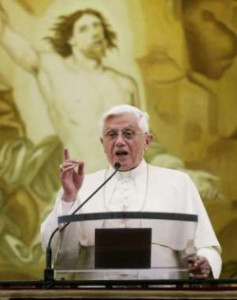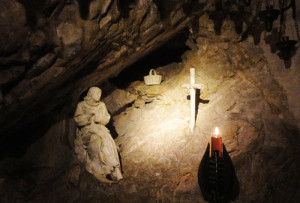The doctrinal heart of the Rule of Saint Benedict is found in chapters 4-7: The tools of good works, obedience, taciturnity (often significantly mistranslated as “silence”), and humility.
Can anyone doubt the average modern Westerner is tempted to view the combination of obedience, silence and humility as a way of robbing the individual of his maturity (exercised by choice and responsibility), of his voice, and of his selfhood?
Saint Benedict cannot possibly mean this, of course. Yet well-meaning Christians can fall into this trap of misinterpretation. I’ve already pointed out our tendency to render “restraint of speech” as “silence.” Saint Benedict actually urges responsible speech, especially where it is most typically going to be denied in an unhealthy community. Thus the younger members are urged to speak up and be heard at community meetings of the greatest importance, and monks who find tasks beyond their abilities are directed to give reasons to the abbot rather than toil miserably without recourse.
This loss of voice is what concerns me especially. I hear so often, when persons are hurting and in need of prayer, expressions like “I know I shouldn’t pray for this, but…” Even in seminary, when I took a course on Wisdom literature, the prof (himself a monk at the time, though he has since left the life) concluded his lectures on Job by claiming that God’s revelation in chapters 38-42 meant that God has more important things to do than to bother about every little human being’s problems. This is a problematic interpretation, by the way, just on exegetical grounds. But it harmonizes with what I discern as a dangerous tendency in the life of faith, to think that being a good Christian means being bullied into silence and conformity by a God who is too busy for us.
God is not too busy for us. God wants to hear from us, especially whatever is hurting us. “Then they cried to the Lord in their need.”
The disciplines of obedience, restraint of speech, and humility are necessary–not because God is threatened by us but because we are forgetful of God. God tends to speak in a still, small voice (which is to say, the opposite of the domineering voice that many lectors take on when reading God’s pronouncements at Mass), easily crowded out by noisiness and idle talkativeness. Talkativeness further cheapens words, and God wishes to give us His Word. Let’s not cheapen that exchange! God gives us an astounding palate of freedom, in order that we might freely offer ourselves as a gift in return. Obedience is not about us being so unreliable and depraved that we need to be treated as slaves. Rather, our desires tend to blind us toward the needs of others, and obedience habituates us to an openness to others, an openness that is, one hopes, less patronizing than what we otherwise might produce by do-gooder-ness [see Deus Caritas Est 34*]. And finally humility is a way to open myself to the grandeur of the cosmos (here is a closer approximation of the message of Job 38-42), of which I form a unique and unrepeatable part…as does everyone else.
Faith does not mean allowing my voice to be co-opted by a dominant power structure. Nor is it about a false propheticism that is license to speak self-righteously about everyone else’s problems. I may require taciturnity to restore my true voice, just as physical therapy necessarily includes rest and inactivity for a damaged limb. But the goal is not silence but true speech, accurate speech, healed of both breezy ignorance and of grating pretension.
* “Practical activity will always be insufficient, unless it visibly expresses a love for man, a love nourished by an encounter with Christ. My deep personal sharing in the needs and sufferings of others becomes a sharing of my very self with them: if my gift is not to prove a source of humiliation, I must give to others not only something that is my own, but my very self; I must be personally present in my gift.” (emphasis added)





